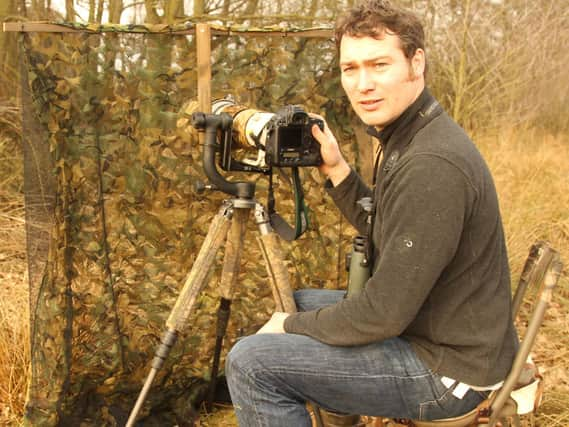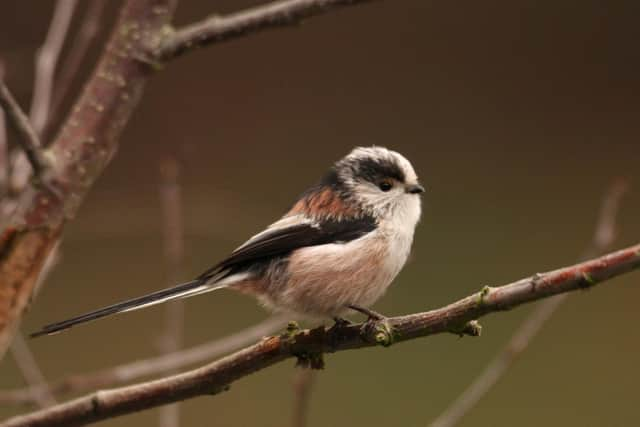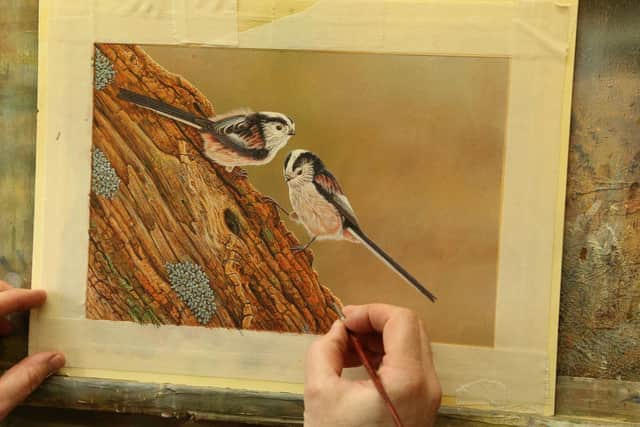Wildlife artist Robert Fuller on the joy of birdwatching at this time of year


I like to paint with my studio door open as things start to warm up. It lifts my mood to hear the spring bird song fill the air.
However, it’s been a chilly start to the year and so far I have only managed to open the doors a couple of times since the winter snows thawed.
Advertisement
Hide AdAdvertisement
Hide AdLast week, however, I was so glad I did because just as I was lifting my paintbrush to my easel, a pair of long-tailed tits caught my eye.


I actually heard them before I saw them, my ears picking out the high-pitched ‘tsurp’ sound of a contact call between male and female.
Since I knew this was a sign these beautiful birds could be building a nest, I headed outside to watch.
Long-tailed tits are one of my favourite birds. They have round bodies covered in pink fluffy feathers and long black tails. It is this long tail that helps easily distinguish this species from others.
Advertisement
Hide AdAdvertisement
Hide AdThey are very active birds and flit from branch to branch, rarely staying still for more than a second, so that it can be hard at first to spot them.


But their noisy, sociable calls usually give them away and it didn’t take me long before I found the pair flying up and then down the length of the garden hedge. I followed the line of this hawthorn until I found their nest, hidden in a nearby berberis shrub.
Each year, long-tailed tits are one of the first birds to begin nesting. They build domed-shaped nests to enclose their chicks in, closed to the elements save for a small entrance hole.
Made from moss, lichen and woven together with cobwebs, these are intricate structures, soundly built. The addition of sticky cobwebs is an ingenious touch, since this species is known for their large broods and the cobwebs help the nest stretch to accommodate the chicks as they grow.
Advertisement
Hide AdAdvertisement
Hide AdI headed back to the house to grab my camera. It is very important not to disturb nesting birds in the breeding season, and so I positioned myself in a nearby bush, a length of camouflaged netting draped over me so that I could film the long-tailed tits coming and going without unsettling them.
As I photographed these busy birds, I was distracted by the courting calls of kestrels in the skies above me. I looked up to see a pair of these birds of prey investigating a nest site in a tree a short distance away. A pair of noisy jackdaws then appeared, and the kestrel’s gentle contact calls soon turned to shouts of warning.
As I peered at this scene through the netting, a long-tailed tit almost made me jump by landing on my camera lens just inches from my face.
It carried another pheasant feather in its beak and quickly flew off to line its nest with more of the soft pheasant down. I watched as this long-tailed tit spent ages readjusting the inside of its nest to make it a perfect fit for its eggs.
Advertisement
Hide AdAdvertisement
Hide AdI decided to take a break from filming and went into the front garden. Here I noticed a pair of wrens heading into the ivy that creeps up the garden wall. One, the male, carried a leaf in its beak.
I decided to take a closer look and noticed another nest, almost finished. Smaller and looser in structure to the long-tailed tit nest, this one was made of moss and leaves and, although also dome-shaped, the construction was a much messier affair.
I stayed still to watch what happened. I noticed that the male was doing most of the work, carefully weaving the mosses and leaves into the ivy.
When he had finished, he started singing out at the top of his voice. Male wrens often build a selection of nests and then show them off to the females, leaving the final choice of accommodation to their mates.
Advertisement
Hide AdAdvertisement
Hide AdI waited to see what she thought of his workmanship and was amused, when she eventually came to take a look, at how excited the male seemed. Hopefully, she liked it and they will go on to nest here.
These were the earliest nests to be built in my garden, but it wasn’t long before the other birds here began to busy themselves with projects of their own and soon my garden began to resemble a busy, avian construction site.
There were robins hopping along the paths, carrying leaves with which to weave their cup-shaped nests from.
As they bustled about, they only narrowly avoided the blackbirds and thrushes that popped in and out of shrubs with grasses in their beaks, about to stitch together the beautiful cup-shaped nests they make from moss and leaves.
Advertisement
Hide AdAdvertisement
Hide AdAnd everywhere were tree sparrows, of which I have some 35 breeding pairs here at Fotherdale, noisily chattering in the hawthorn hedge or investigating the terrace-style boxes I have built for them.
Higher up in the branches of the trees above, barn owls were also beginning to pair up and choose suitable nesting sites.
Owls and kestrels nest in holes in trees but will also raise their chicks in old buildings or barns and readily take to purpose-built nests, of which I have built many especially for them.
Some time before they are ready to lay, birds of prey dig a shallow scrape into the floor of their nest. Both males and females scratch away at the floor of a nest to create a comfortable hollow for their eggs.
Advertisement
Hide AdAdvertisement
Hide AdBut this preparation pales in comparison to the energy, inventiveness, and sheer hard work other, smaller, bird species put into their nests. I never fail to be amazed at the way these smaller species busily create intricate shapes using just their beaks.
Find out more about how birds built their nests at Robert Fuller’s latest art exhibition, Brilliant Bird Nests. The online event, which launches in time for Easter, features a collection of paintings inspired by watching birds build their nests and is available to view on his website www.robertefuller.com from April 1-30.